25 GORGEOUS gardens in the UK and beyond
Ranked: 25 incredible gardens from across the globe
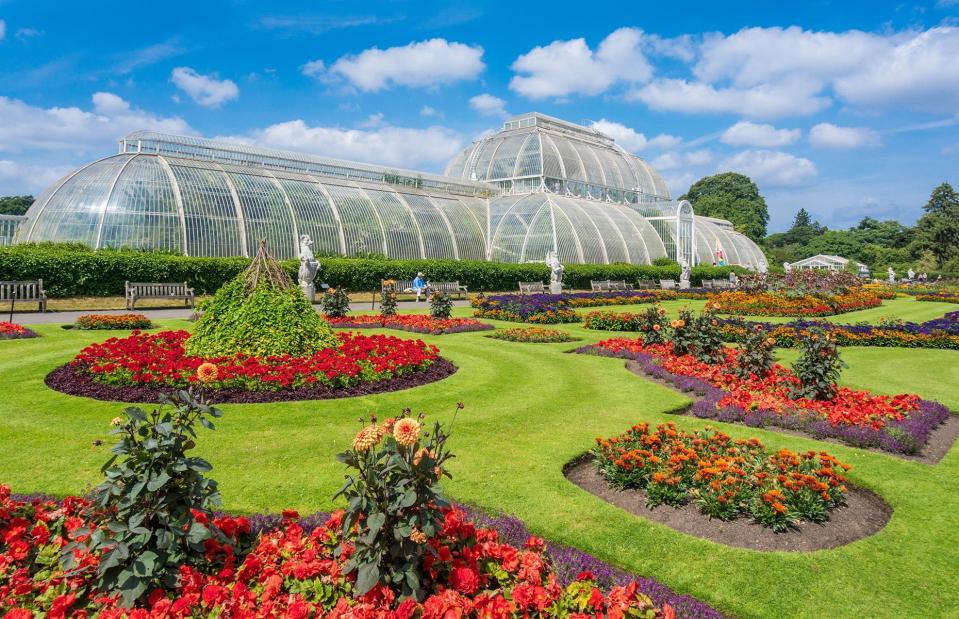
eye35.pix / Alamy Stock Photo
From the striking Jardin Exotique in Monaco to New York’s famous High Line, these traditional and contemporary gardens across the globe will take your breath away with their incredible designs. Join us as we explore the very best the botanical world has to offer, including the classical grounds of the breathtaking Palace de Versailles and the futuristic Seattle Spheres of Amazon’s offices.
We've based our ranking on the beauty, importance and popularity of each garden, and the opinions of our well-travelled team. The list is unavoidably subjective.
25. Seattle Spheres, Washington, USA
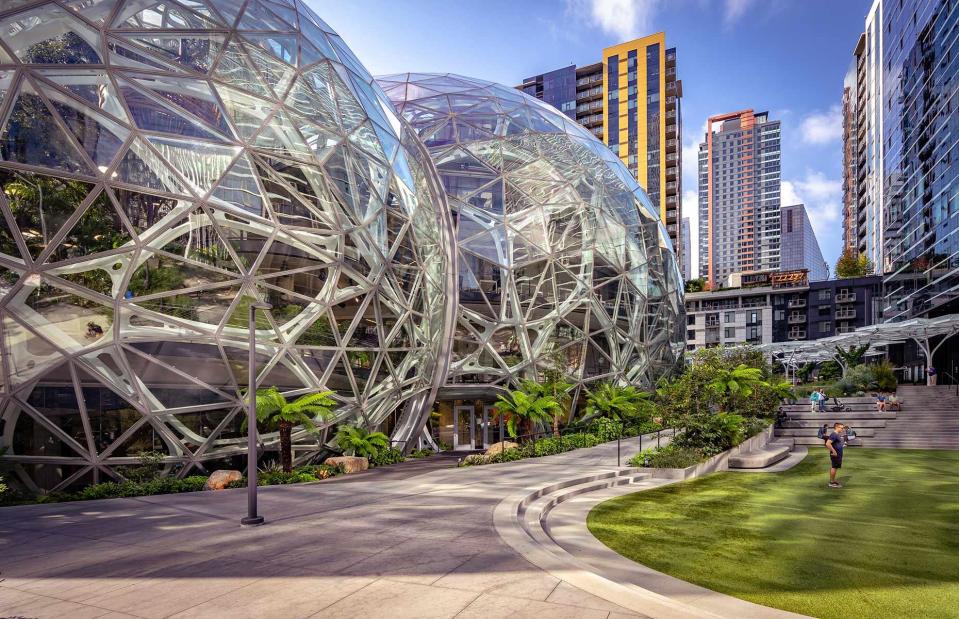
Alex Cimbal / Shutterstock
These glass-domed buildings are part of Amazon's headquarters in Washington. Featuring living walls made up of over 25,000 plants, this biophilic design is becoming more and more prevalent in contemporary architecture, in a bid to counteract pollution and promote health and wellbeing.
24. Sir Seewoosagur Ramgoolam Botanical Garden, Port Louis, Mauritius
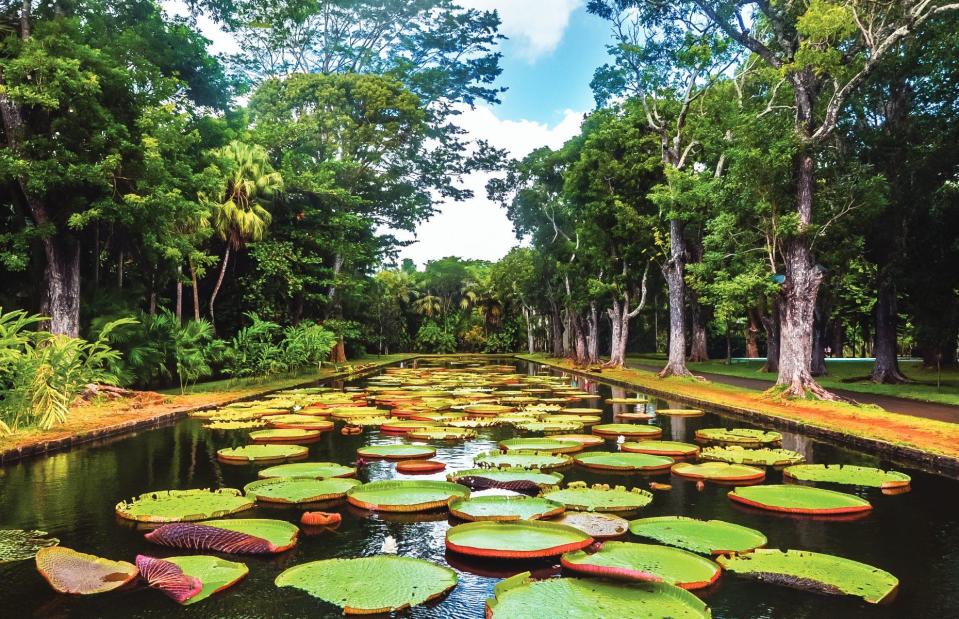
Natalya Sterleva / Shutterstock
Named after the first prime minister of Mauritius, Sir Seewoosagur Ramgoolam Botanical Garden is the oldest botanical garden in the southern hemisphere.
Established in 1770, the garden contains 85 tropical palm species as well as spices, ebonies and sugar canes.
Before being renamed for Ramgoolam in 1988, it was known as the Royal Botanic Gardens of Pamplemousses, and is famous for its long pond of giant water lilies.
23. Babylonstoren, Western Cape, South Africa
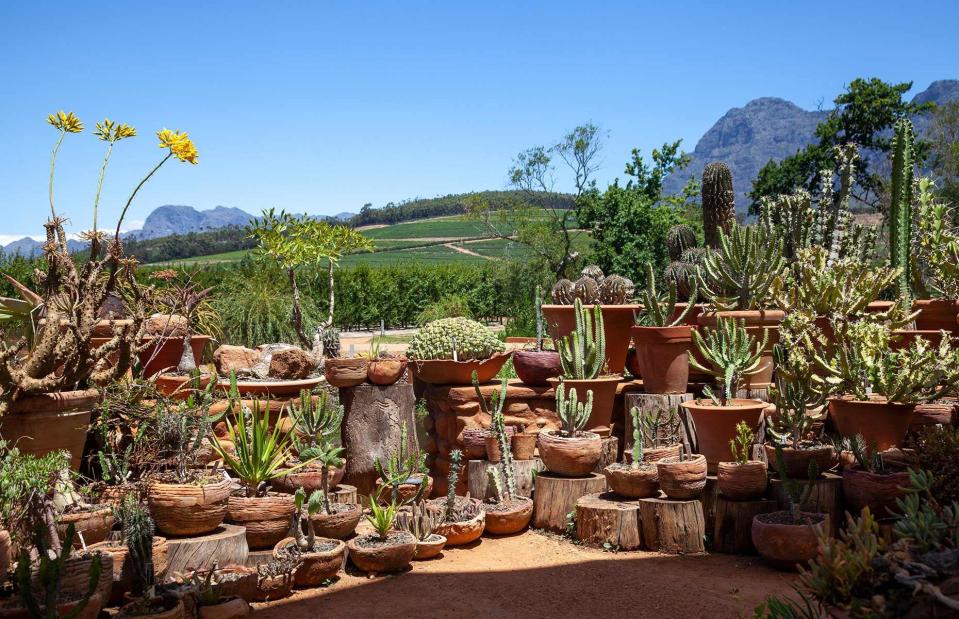
M.Sobreira / Alamy Stock Photo
In 2007, French garden architect Patrice Taravella created this decorative productive garden on one of the oldest Cape Dutch farms in South Africa.
Here, visitors can discover 15 sections that include a prickly-pear maze, ponds planted with edible lotus blooms and thousands of clivia lilies that sing against the Simonsnerg mountain.
22. High Line, New York City, USA
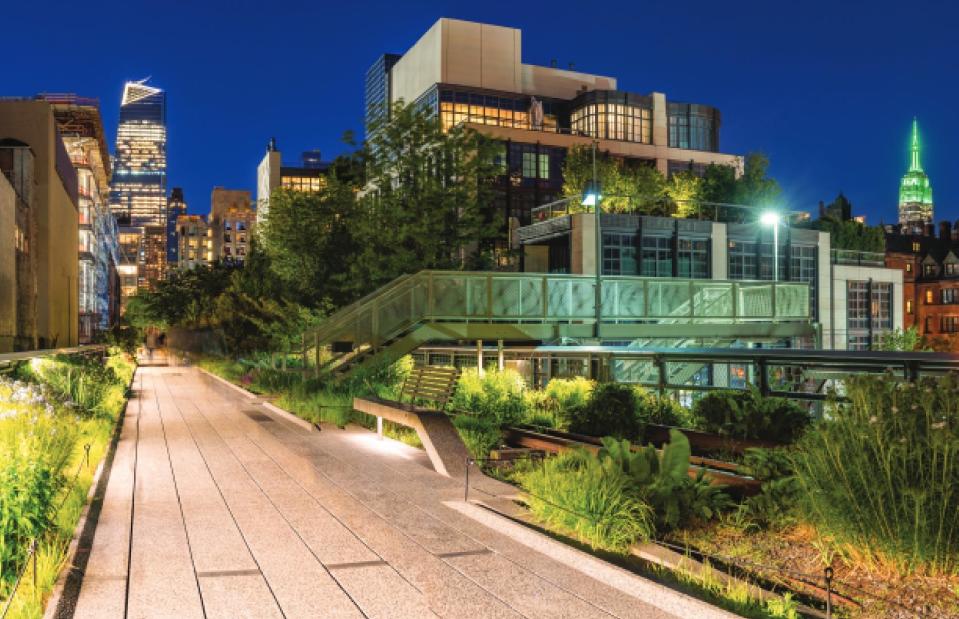
Francois Roux / Shutterstock
This 1.5-mile-long elevated park was planted on an abandoned elevated New York Central railroad spur on the west side of Manhattan. High Line was designed by the master of the New Perennial movement, Piet Oudolf, in collaboration with James Corner Field Operations and Diller Scofidio + Renfro to use pockets of wild greenery that had reclaimed the structure into a string of site-specific urban micro-climates.
The planting works in harmony with the structure to include sunny, shady, wet, dry, windy and sheltered spaces that house flowers, grasses and trees in a beautiful green line that runs through the heart of the city.
21. Portland Japanese Garden, Oregon, USA
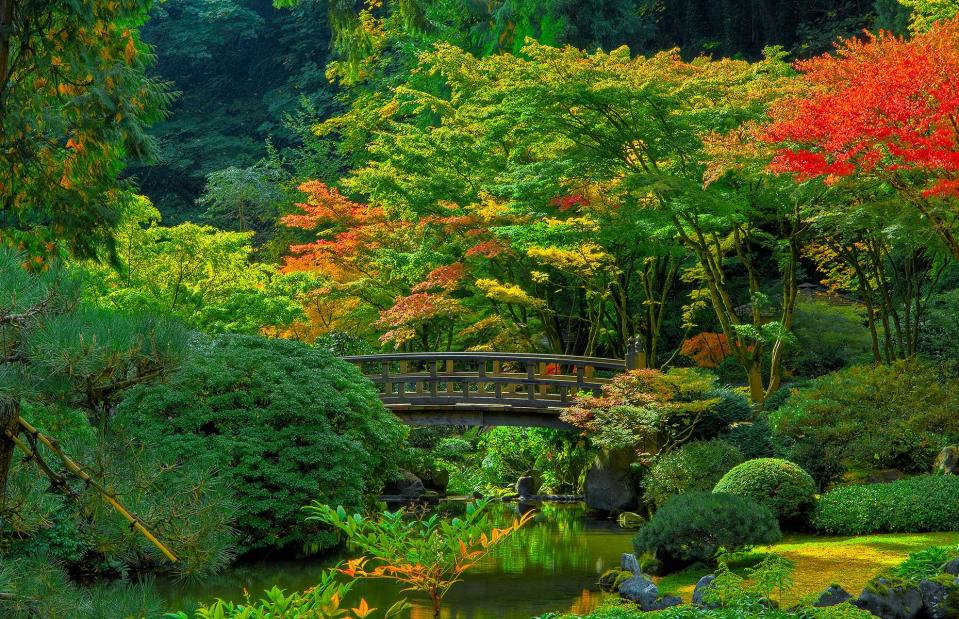
Prisma by Dukas Presseagentur GmbH / Alamy Stock Photo
Complete with a waterfall, a teahouse and mountain views, the Portland Japanese Garden was designed to help build relations between Oregon and Japan in the 1950s.
Referred to as the most authentic Japanese garden outside of Japan, the 12-acre space has been open to the public since 1967 and continues to evolve and develop today.
20. Boboli Gardens, Florence, Italy
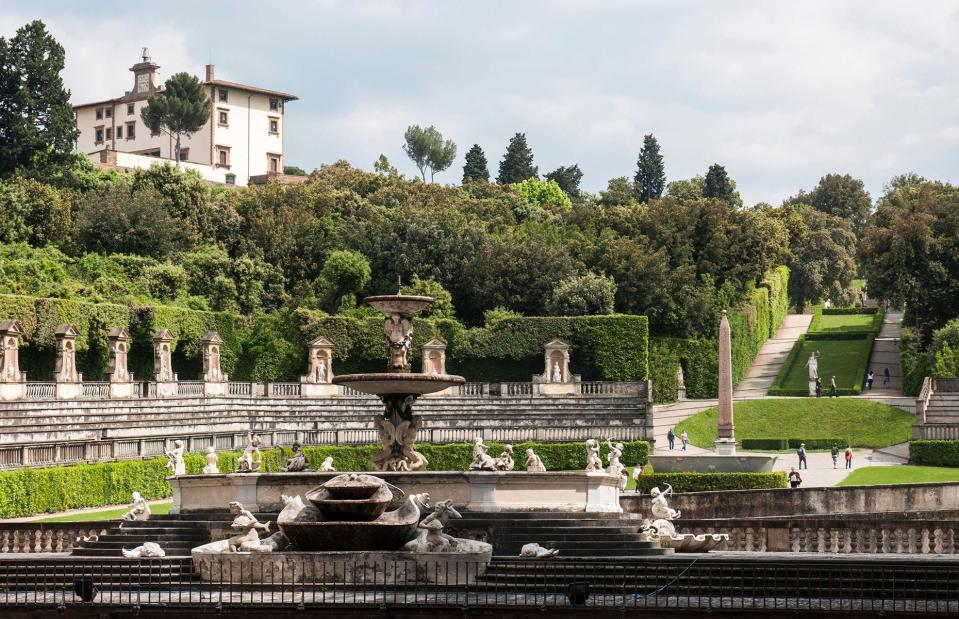
Philip Game / Alamy Stock Photo
This beautiful historic park in the heart of Florence was originally designed for the Medici family and is one of the earliest and most quintessential examples of an Italian-style garden.
Opened to the public in 1766, the garden is brimming with large decorative fountains, sculptures ranging in style from ancient to Renaissance, and a decorative grotto designed by the famous artist Bernardo Buontalenti.
19. Jardin Exotique, Monaco
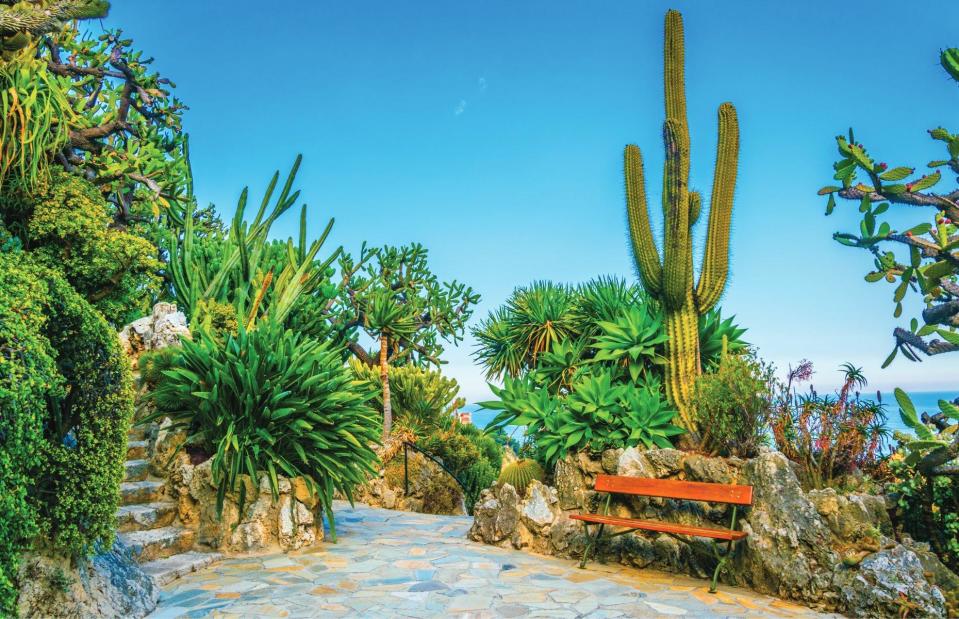
Pavel Dudek / Alamy Stock Photo
The Exotic Garden of Monaco overlooks the Mediterranean, having been built into a cliffside in 1933, providing incredible panoramic views of Monaco.
The botanical garden features succulents and cacti from all regions of the world, including South America and Africa, a collection that began with exotic plants collected from Mexico in 1865.
18. Quinta da Regaleira, Lisbon, Portugal
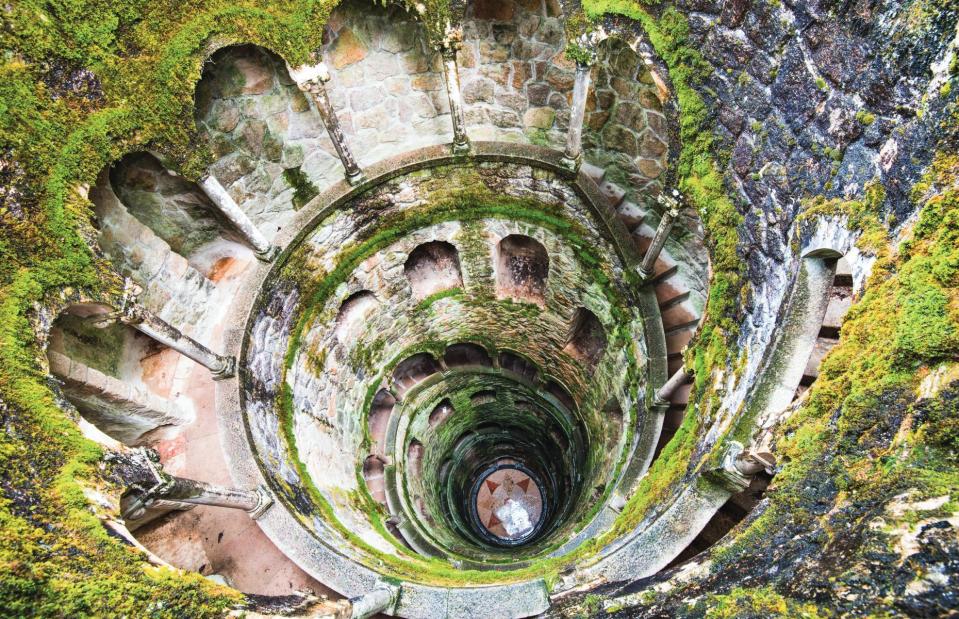
Sean Pavone / Shutterstock
Plentiful gardens can be found in the hills that overlook Lisbon, in the village of Sintra. One particularly spectacular garden is this 9.8-acre UNESCO World Heritage Site.
Built in the late 19th century by Italian architect, Luigi Manini, the smorgasbord of grottoes, wells, fountains and lakes was designed for wealthy Brazilian-Portuguese businessman, António Augusto de Carvalho Monteiro.
17. Koishikawa Korakuen Garden, Tokyo, Japan
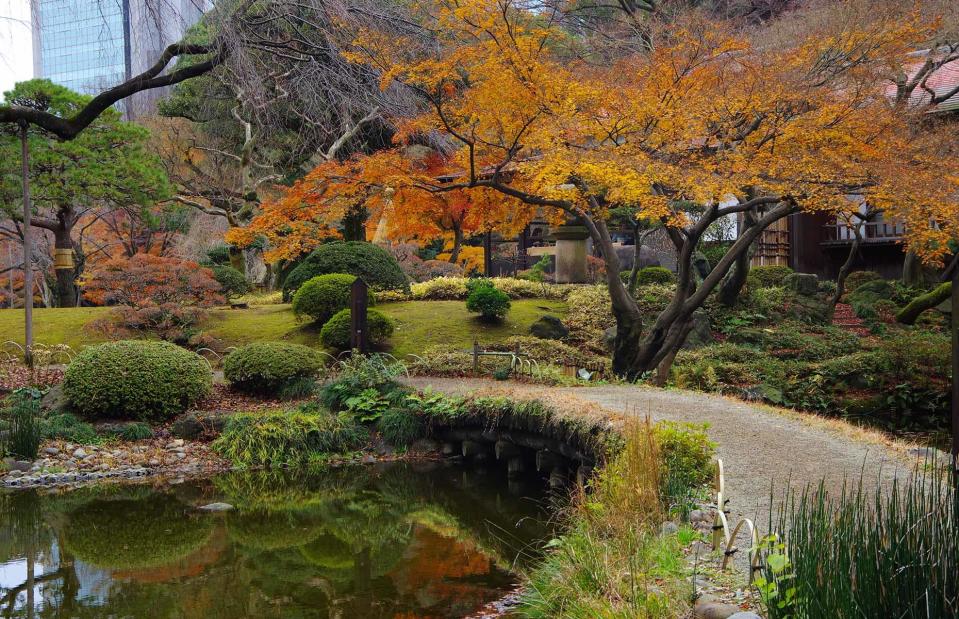
LO Kin-hei / Shutterstock
The Koishikawa Kōrakuen is a large urban park in the Koishikawa neighbourhood of Bunkyō, Tokyo. Built in 1629, it is one of three surviving daimyō gardens created during the early Edo period.
The historical park is at its most beautiful during the spring when the cherry blossom blooms and the autumn months when the maple trees turn shades of vibrant orange and red.
16. Stourhead, Wiltshire, England
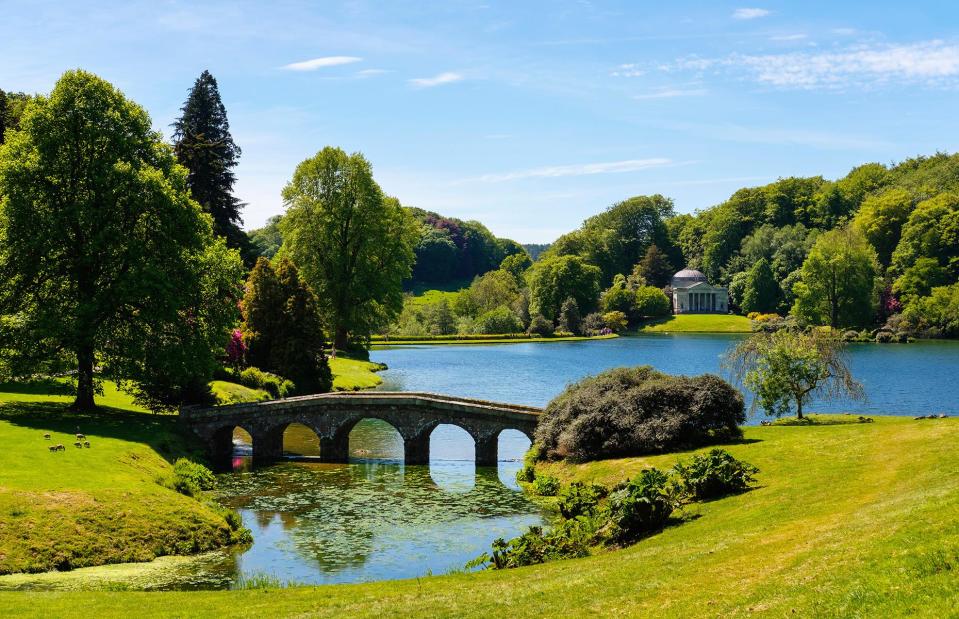
imageBROKER.com GmbH & Co. KG / Alamy Stock Photo
Before being given to the National Trust in 1949, Stourhead House belonged to the Stourton family for half a century and was one of England’s greatest Palladian mansions.
Stourhead came into the possession of the Hoares, the banking family, in 1717. The house's sumptuous surrounding gardens, dating back to the mid-18th century, depict the traditional English landscape style, complete with an artificial lake and plenty of classical follies and sculptural monuments.
15. Jardin Majorelle, Marrakech, Morocco
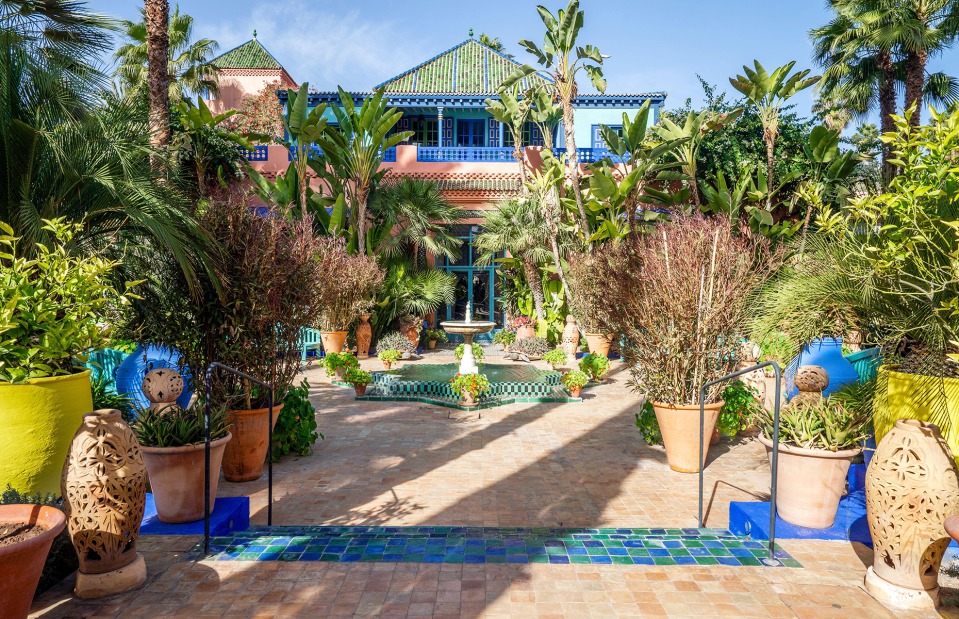
Jacek Sopotnicki / Alamy Stock Photo
French painter Jacques Majorelle began creating this spectacular Marrakesh garden in 1922. The artist spent forty years planting exotic botanical species among boldly-coloured architecture inspired by Art Deco and Moorish design.
In 1980, fashion designer Yves Saint Laurent and partner Pierre Bergé bought the garden to help restore the property.
Pictured is the Musée Berbère, which houses artefacts initially collected by Majorelle in Amazigh. A second museum now contains items from the collection of Yves Saint Laurent and Pierre Bergé, and the scattered ashes of Laurent.
14. Keukenhof, Lisse, Netherlands
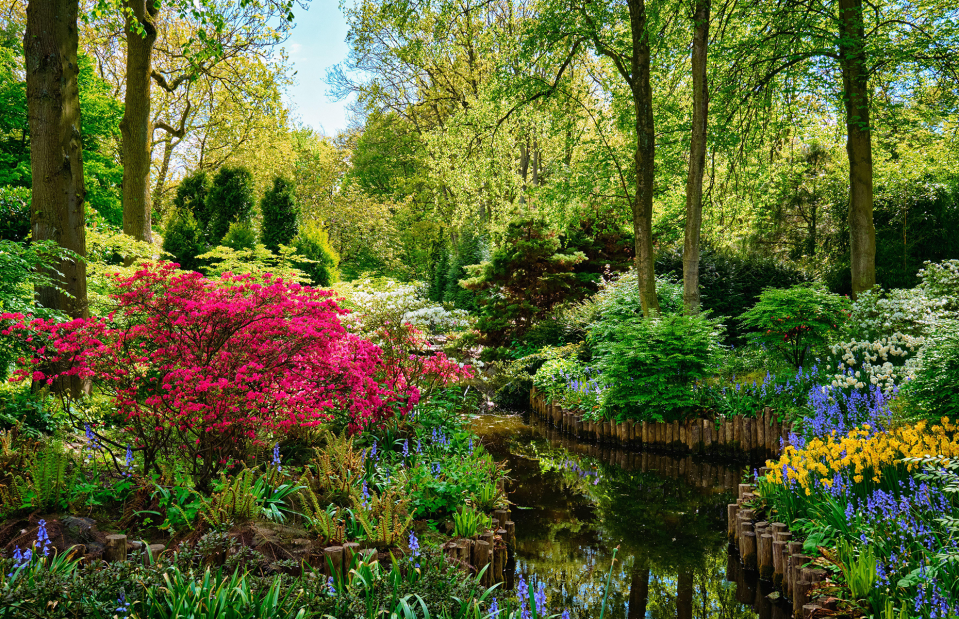
f9photos / Alamy Stock Photo
Keukenhof is found in the municipality of Lisse, in the Netherlands, and is sometimes known as the Garden of Europe.
One of the world's largest flower gardens, Keukenhof Park covers an area of 32 hectares, where approximately seven million flower bulbs are planted annually. A living catalogue of the work of 100 bulb breeders, Keukenhof reflects the country's bulb and cut-flower growing heritage.
13. Pukekura Park, New Plymouth, New Zealand
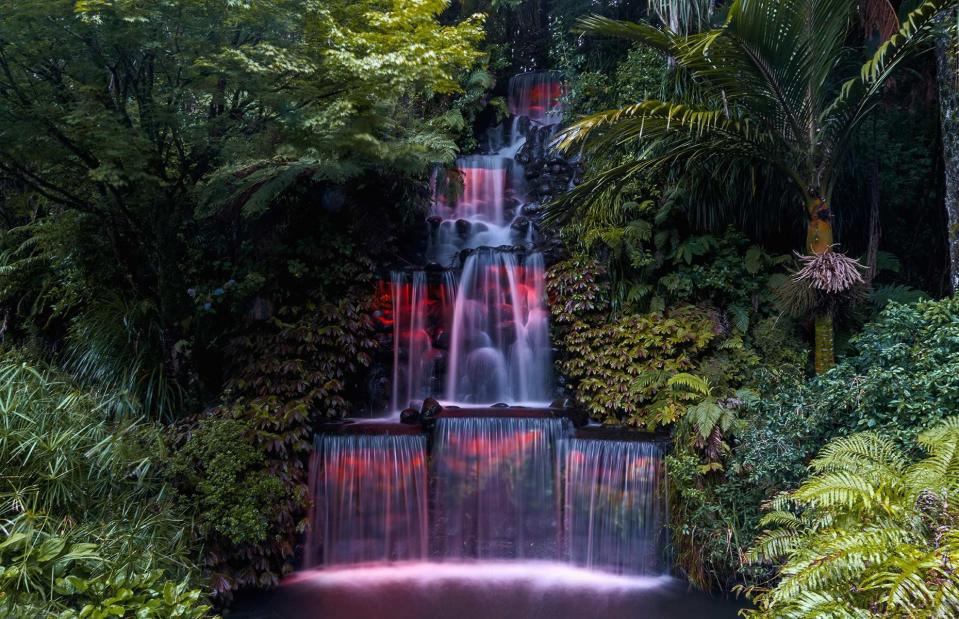
Hanna Tor / Alamy Stock Photo
Often described as 'the jewel in New Plymouth's crown', Pukekura Park covers 128 acres in the heart of the city. Highlights include Poet's Bridge, named after a racehorse whose winnings paid for the Japanese-inspired structure, the water lily lake and the unmissable artificial waterfall that comes to life at night with a colourful light display.
12. Madeira Botanical Garden, Funchal, Madiera
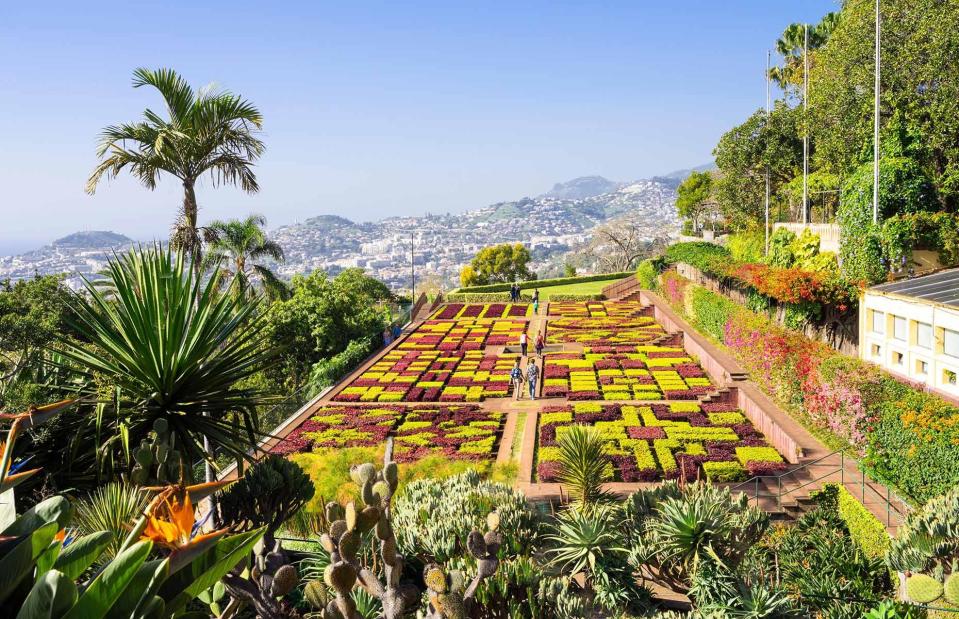
eye35 select / Alamy Stock Photo
This Portuguese island's subtropical climate makes it the perfect location for an estimated 2,000 exotic plants to thrive in Madeira's botanical gardens. Established by the Reid family in 1881, the lush mountainside gardens span almost 20 acres and perch 492 to 984 feet above sea level, boasting incredible views of Funchal Bay.
11. Royal Botanic Gardens, Victoria, Australia
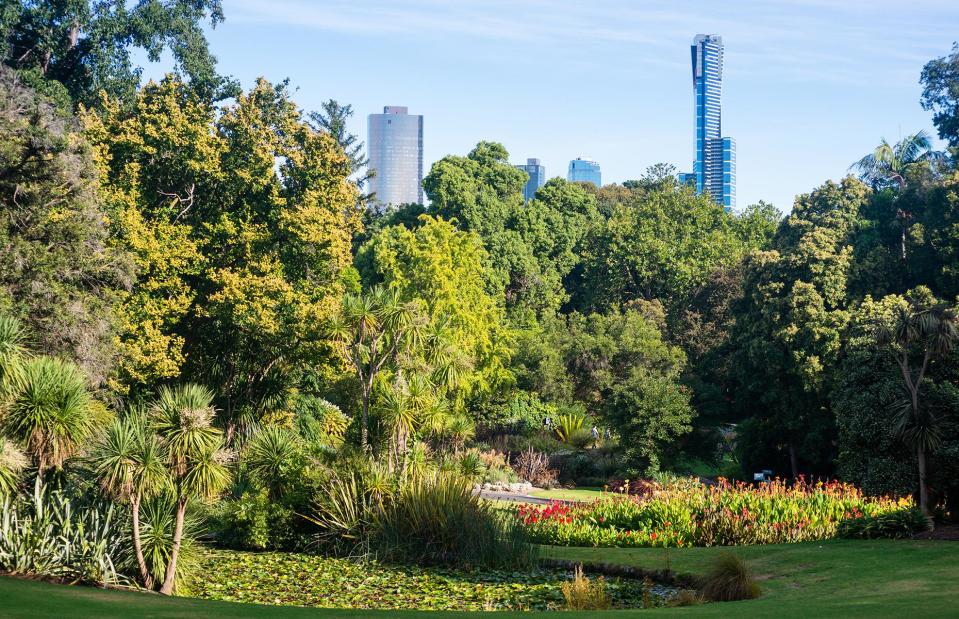
Andrew Michael / Alamy Stock Photo
With more than two dozen living plant collections, the Royal Botanic Gardens sits on the banks of the Yarra River in Melbourne. The magnificent public gardens play host to lawns, lakes and garden beds that house collections of eucalypts, cycads, ferns and plants from New Zealand, New Caledonia, Southern Africa and South China.
10. Butchart Gardens, British Columbia, Canada
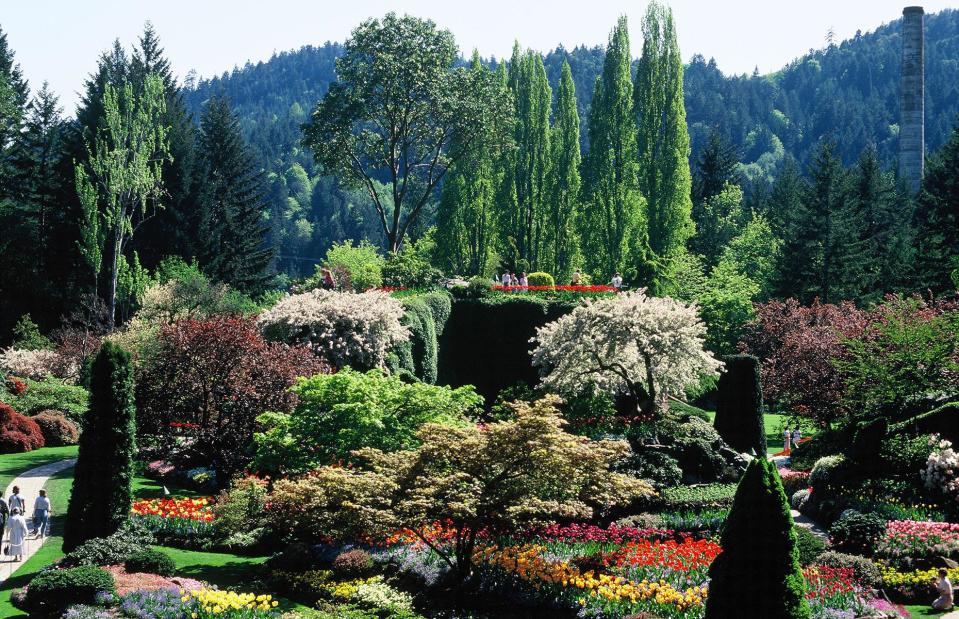
Horizon International Images / Alamy Stock Photo
This 55-acre display garden in Brentwood Bay, British Columbia is home to an impressive collection of plants, ornamental birds and bronze statues.
Inspired by the aesthetic appeal of both the Italian Renaissance and the English Arts and Crafts movement, the sunken garden was created by the Butchart family between 1906 and 1929 as a place for entertaining guests.
Though now a public park, remains under the management of the Butcharts today.
9. Gardens by the Bay, Singapore
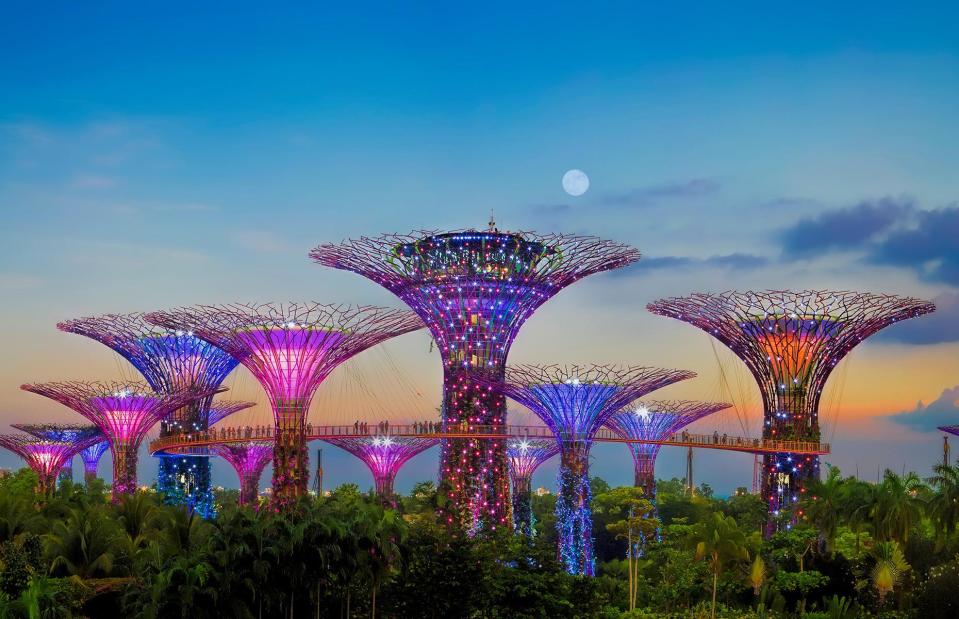
Kjersti Joergensen / Alamy Stock Photo
Opened in 2011, Gardens by the Bay in Singapore hosts hundreds of thousands of plant species from around the world across its 250 acres.
The world’s largest greenhouse, the Flower Dome, can be found here, while an emphasis on sustainability is demonstrated by the photovoltaic cells contained within the garden’s iconic Supertree Observatory.
8. Shinjuku Gyoen, Tokyo, Japan
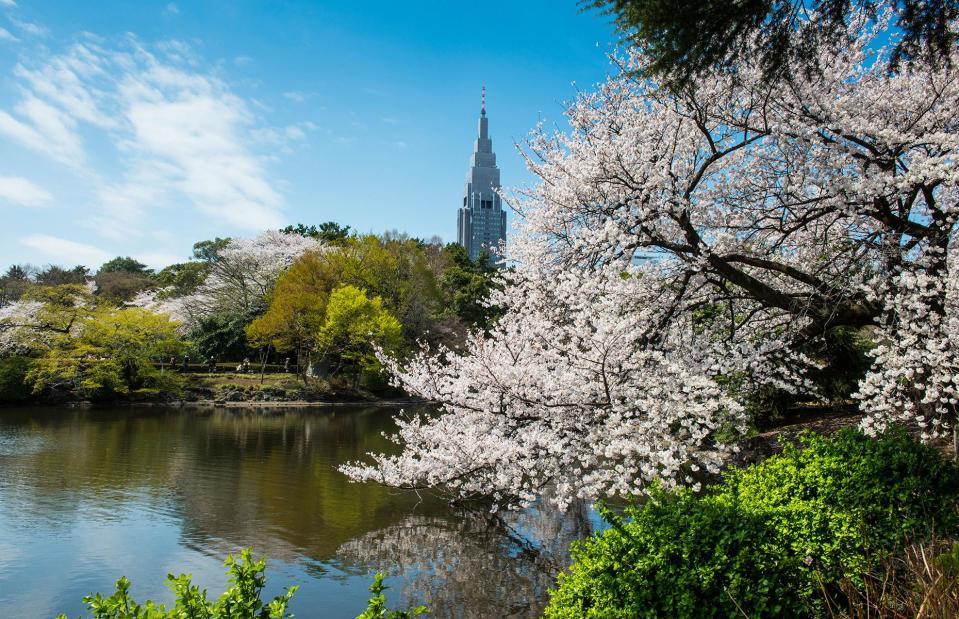
robertharding / Alamy Stock Photo
One of Tokyo’s largest and most popular parks, Shinjuku Gyoen boasts spacious lawns, lush greenery, romantically meandering pathways and one of the best cherry blossom viewing spots in the city.
The park’s origins date back to the Edo Period (1603-1868), when it was the private residence of Tokyo’s feudal lord. It was later converted into a botanical garden and transferred to the Imperial Family in 1903, before being nearly destroyed during the Second World War. However, the gardens were eventually restored and reopened as a public park in 1949.
7. Nong Nooch Tropical Garden, Pattaya City, Thailand
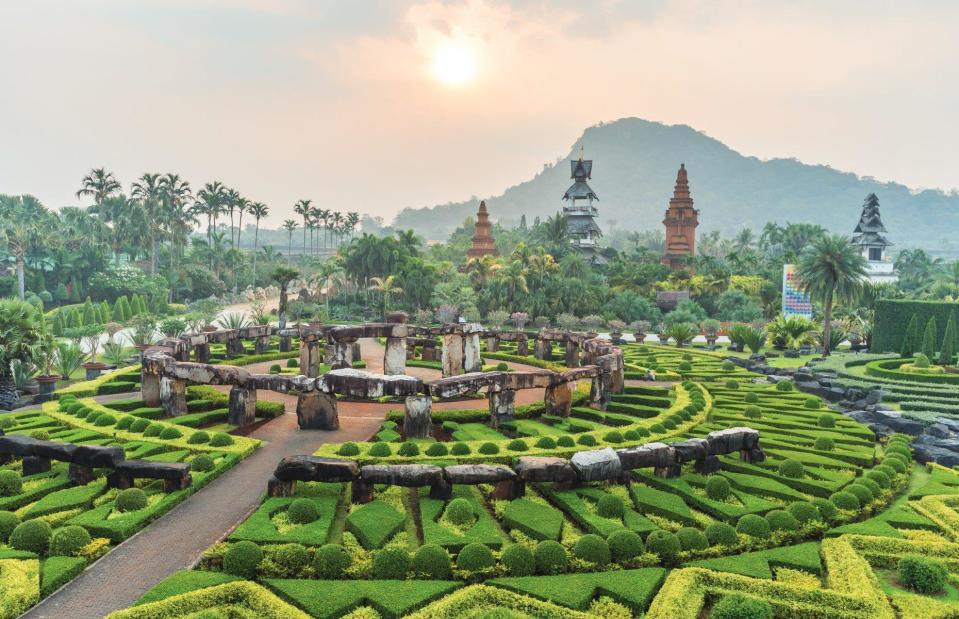
Maxim Tupikov / Shutterstock
This 600-acre tropical garden in Thailand is one of the largest in Southeast Asia. The owners originally intended for the land to be given to a commercial plantation but, after admiring ornamental gardens abroad, changed their minds.
It has been open to the public since 1980, boasting palm, orchid and cycad collections, a Thai topiary garden, French- and Italian-style gardens and even a Stonehenge garden. It is also a major scientific centre dedicated to cycads (similar to palm trees), with its own Cycad Gene Bank.
6. Château de Villandry, Indre-et-Loire, France
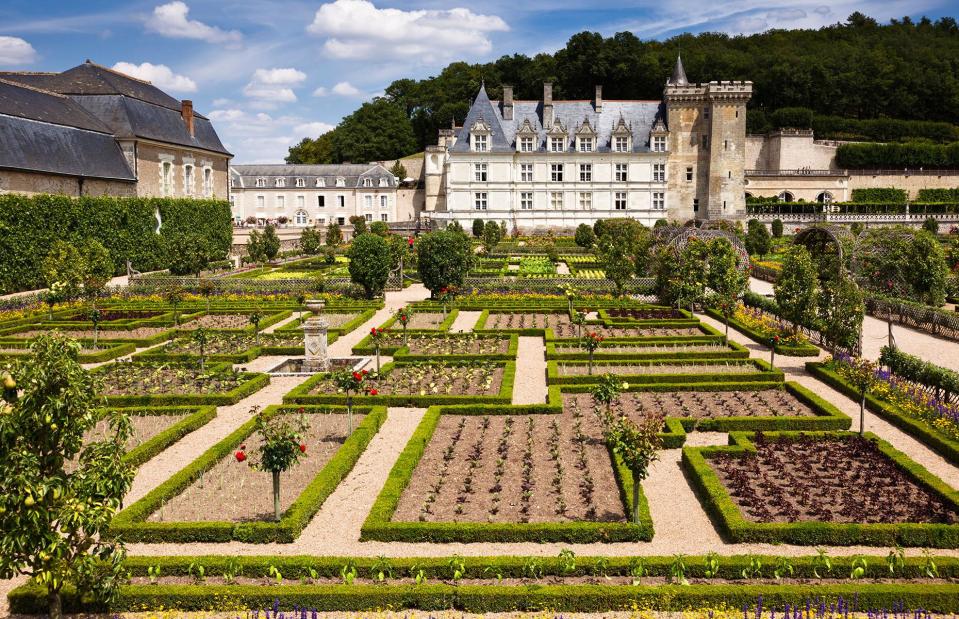
incamerastock / Alamy Stock Photo
The gardens of the Renaissance-era Château de Villandry put sustainability and biodiversity first. Organic produce – decorative cabbages, leeks, tomatoes and kale – thrives in the autumn months, thanks to the efforts of the late Joachim Carvallo and his American wife Anne Coleman, great-grandparents of the current owner, Henri Carvallo.
5. Kew Gardens, London, UK
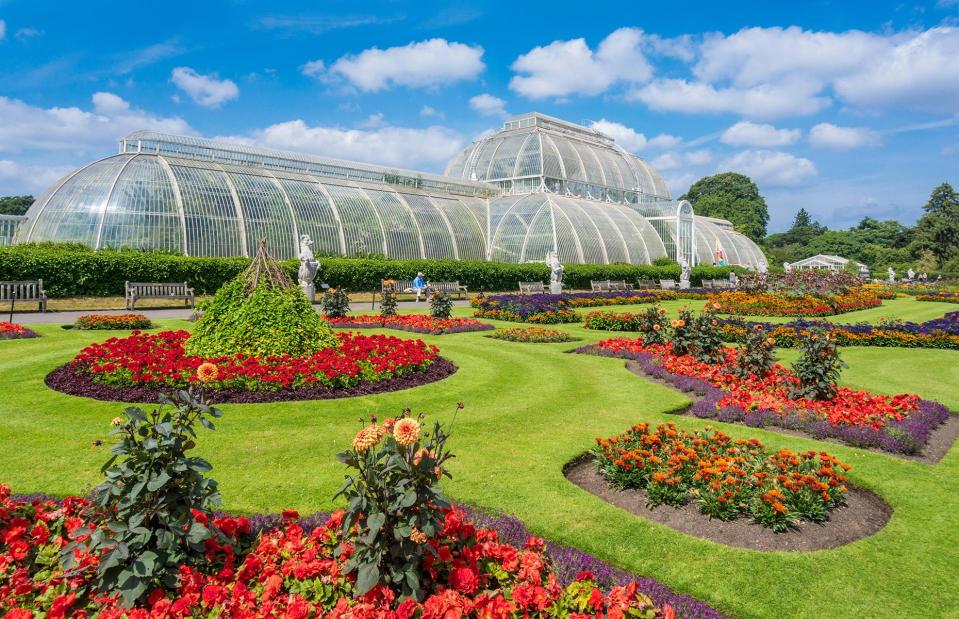
eye35.pix / Alamy Stock Photo
London’s Kew Gardens is home to the largest and most diverse botanical collection in the world. Opened to the public in 1840, it was an expansion of King George III's mother's botanic garden, which she founded at Kew in the mid-18th century.
Over the past 200 years, the gardens have grown to include its iconic Victorian Temperature House, Japanese Gateway and recently-restored Great Pagoda. It is also now considered a World Heritage Site.
4. Monet’s Garden at Giverny, Eure, France
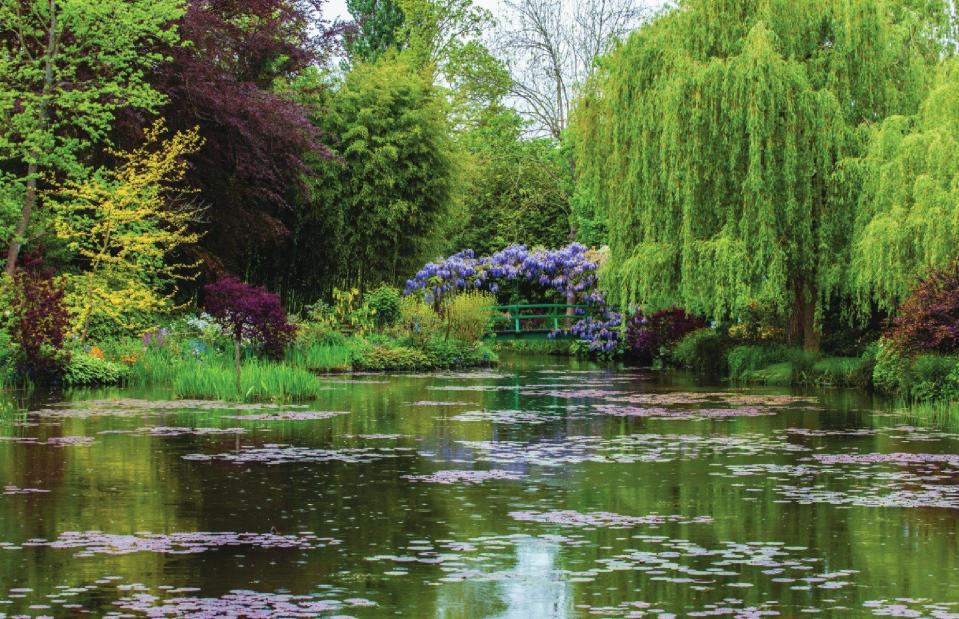
Oleg Bakhirov / Shutterstock
Artist Claude Monet lived at his Giverny home from 1883 to 1926. However, it is the garden here that deserves the most attention. Sitting some way from the house itself, the property harbours a Japanese water garden from the 1880s, inspired by prints Monet collected.
A second garden can be found closer to the artist’s residence, featuring symmetrical flower beds, fruit trees and climbing roses. The impressionist would later immortalise the water lilies in a series of approximately 250 oil paintings.
3. Taj Mahal Gardens, Agra, India
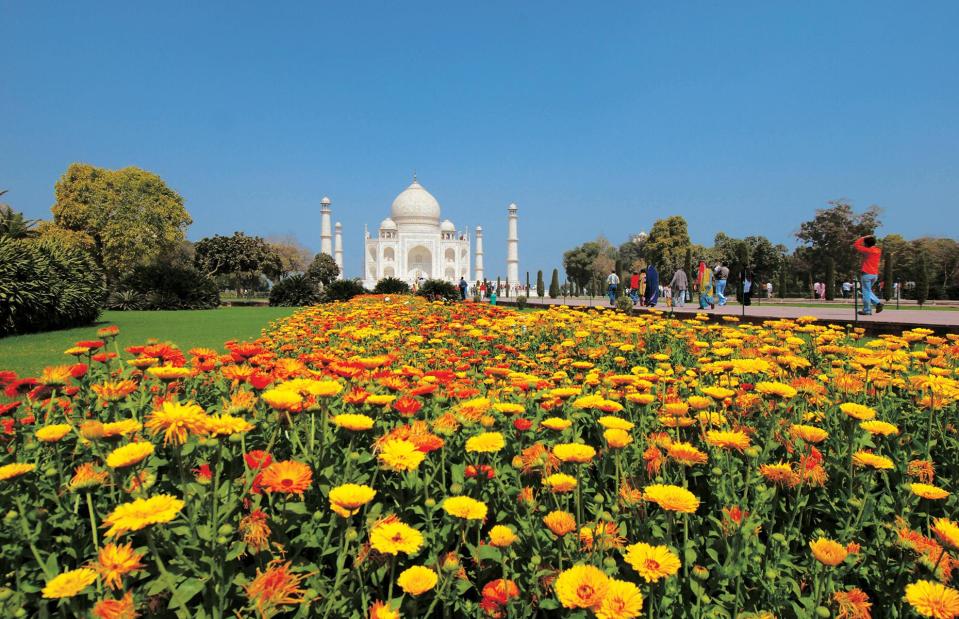
Dinodia Photos / Alamy Stock Photo
While the Taj Mahal itself may well be one of the world’s most iconic landmarks, the surrounding gardens are equally spectacular.
The Garden of Heaven, as the grounds are known, were influenced by the Mughal gardens found in Persia and are packed with symbols which represent the Indian empire.
The symbolism of the garden’s design is derived from sacred Islamic texts and relies on the significance of flowers, trees, plants and water.
2. Palace de Versailles, Île-de-France, France
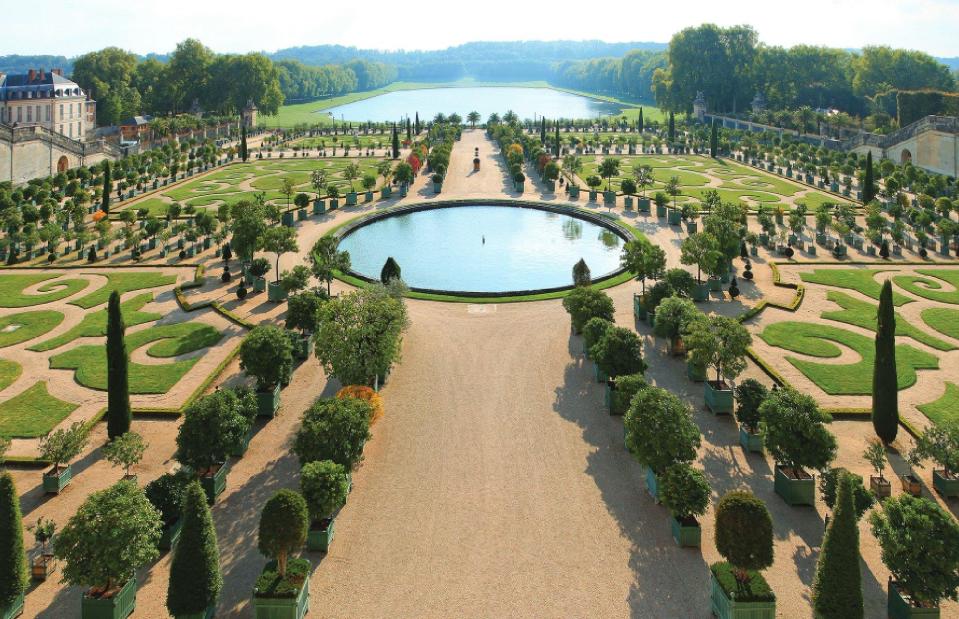
Andre Quinou / Shutterstock
The Palace of Versailles is a former royal residence located just outside of Paris. Louis XIII had built a hunting lodge on the site in 1623, which was later replaced by a small château. His son, Louis XIV, expanded the château into the beginnings of the palace we know today and, in 1682, moved his court and government here.
In 1661, Louis XIV instructed André Le Nôtre to create the formal gardens, which were completed over forty years. The designs incorporate parterres, clipped hedging, fountains and canals and the palace and gardens are now a renowned UNESCO World Heritage Site.
1. Villa d’Este, Lazio, Italy
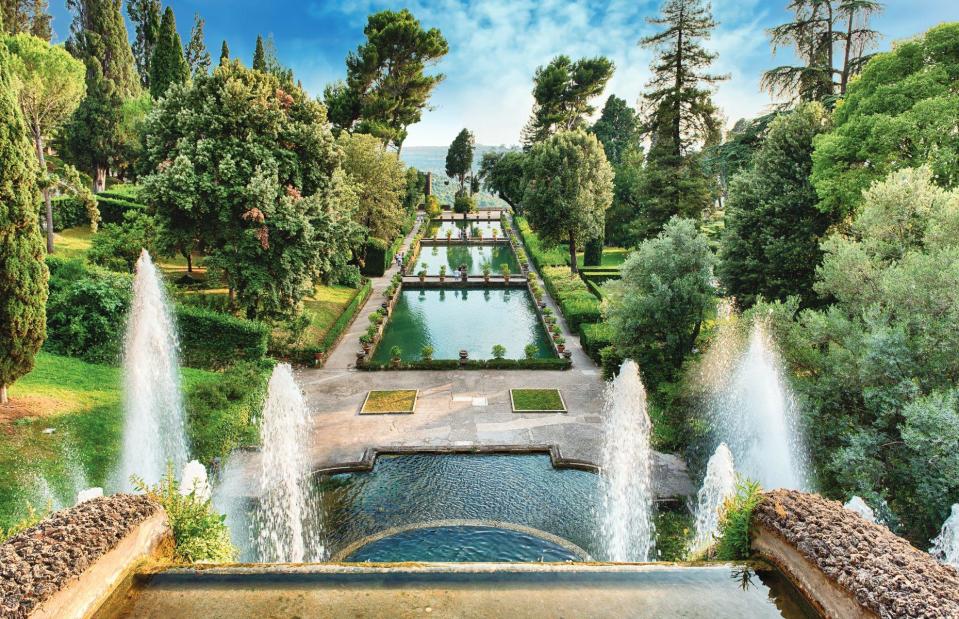
Marco Rubino / Shutterstock
Now an Italian state museum, Cardinal Ippolito Il d'Este commissioned architect Pirro Ligoriothe to create a new villa and garden to exceed anything the Romans had built. Many water features flourish throughout the terrace, framed by two foliage-rich slopes. The Organ Fountain is an early feat of engineering, while the Tivoli villa and gardens are a UNESCO World Heritage Site.
According to UNESCO, Villa d'Este is one of the "most remarkable and comprehensive illustrations of Renaissance culture at its most refined", and it's this combination of incredible sculptures, horticulture and history that has helped it grab the top spot.
Loved this? Explore more beautiful stately homes and gardens

